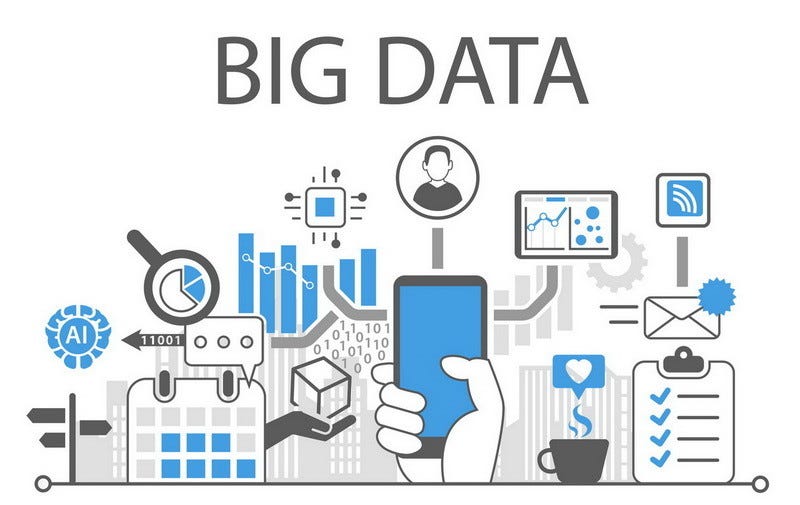Big Data is making huge advancements in the technological sectors. Already Big Data is widely used in applications such as marketing, financial management, and also the criminal justice system. Still, there are other advantages of Big Data that are less recognized, although they are also significant.
One new application which has found Big Data useful is the NFTs. The whole concept of NFTs is founded on big data.
How Big Data is Fueling the Growth of the NFT Market
Recently, NFTs (Non-fungible tokens) have been recognized globally. They have been responsible for significant changes in a variety of industries, which includes art and finance. As a result, many people believe that NFTs will eventually influence every aspect of society.
This may appear exaggerated, but it is not. The potential effects of NFTs, as one of the most significant innovations, in sports, fashion, and technology, among others, have been demonstrated in recent years. Since NFTs became the norm in 2021, there has been a lot of media hype and drama.
Big data advancements have made NFTs possible. If data is the new oil, enterprise NFTs are the tankers, wrote Praphul Chandra, Founder, and CEO of Koinearth, for The World Economic Forum. This is why. There are many wonderful benefits to treating data as an asset, according to Chandra, but logistical issues make that difficult. Many of these issues have been mitigated by NFTs.
What exactly are NFTs?
Non-fungible tokens are a type of data unit on the blockchain network that, when linked to a physical or digital asset, can provide stable proof of ownership. These tokens frequently contain information that can be linked to songs, images, avatars, and videos, among other things.
Regardless, they can assist owners in gaining exclusive access to digital or live events, as well as being linked to physical assets such as cars and more. Big data opens up new avenues for making the most of NFTs. With this in mind, it is safe to say that NFTs can enable users to not only create items but also buy and sell assets on blockchain technology safely.
However, unless otherwise stated, you cannot purchase intellectual property rights or copyright of the underlying asset. However, trading NFTs is not as simple. The following section will go into greater detail.
Using Data Science to Create, Buy, Sell, and Value NFTs
As previously stated, dabbling in NFTs is not easy. As Dr. Stylianos Kampakis discusses in this post in The Data Scientist, data science has made it much easier to take advantage of them. To buy one, cryptocurrencies are used to fund an NFT account, while a crypto wallet is used to protect the data when an NFT is purchased.
You will also need to understand how to value them. This is where data science becomes particularly useful.
NFT Profit is one of several tools that can help traders make the most of NFT derivatives. The steps below will give you a better understanding of how to create and trade NFTs:
- Acquire a crypto wallet
Digital assets can be stored by using crypto wallets. Software and a hardware wallet are available for selection. A software wallet is apt for short-term trades whereas a hardware wallet can be used to store and transfer valuable assets safely.
To select the best cryptocurrency wallet, you can use data analytics tools. More information can be found in this post.
- Purchase a Cryptocurrency
The cryptocurrency industry is benefiting greatly from data analytics. One advantage is that analytics can help investors time their purchases and choose the best cryptocurrencies.
MakersPlace and Nitty Gateway are two examples among the various NFT marketplaces where traditional payment methods can be used. The quality of different marketplaces can be assessed with the help of data analytics tools. Reading a lot of reviews can also help you in finding the best. Meanwhile, OpenSea and SuperRare only support cryptocurrencies. Because most NFTs are fully integrated into the Ethereum blockchain, ETH is the best crypto for NFT transactions.
- Select a Marketplace
Consider whether you need to mint a single NFT or a collection of these tokens in a batch before selecting a marketplace. OpenSea is one of the best locations for the latter. You should also think about Rarible and LooksRare. Aside from that, you should be aware that minting incurs initial costs, which may take the form of a transaction fee in some marketplaces. You should also become acquainted with royalty splits.
- Mint a new NFT
Before selecting an item, make certain that you own the intellectual property rights and copyright to it. This procedure is critical because creating tokens with assets that are not yours can easily lead to legal issues. You can register at your preferred marketplace. Then you can begin minting.
It should be noted that some NFTs may only be purchased on the open market. You can, however, buy your preferred NFTs right away or, in some cases, place a bid on your preferred NFTs and wait until the auction ends.
- Value Your NFTs
NFTs can be valued using data analytics. Kampakis and one of his students created a hedonic regression method to value CryptoPunk with one of his students. He emphasizes that the same data analytics approach can be extremely beneficial in valuing other NFTs.
NFTs have gained widespread acceptance throughout society. Big data has played a significant role in this unexpected new market. As a critical modern innovation, NFTs serve numerous functions. However, creating, purchasing, and selling these tokens is not so easy. You must familiarize yourself in order to avoid problems during NFT transactions. The good news is that data analytics simplifies all of these steps.




